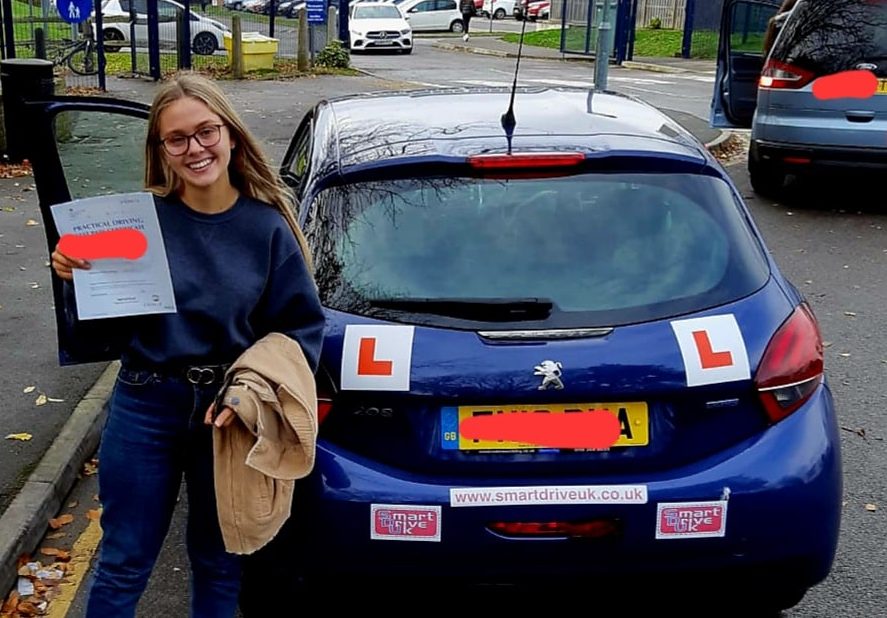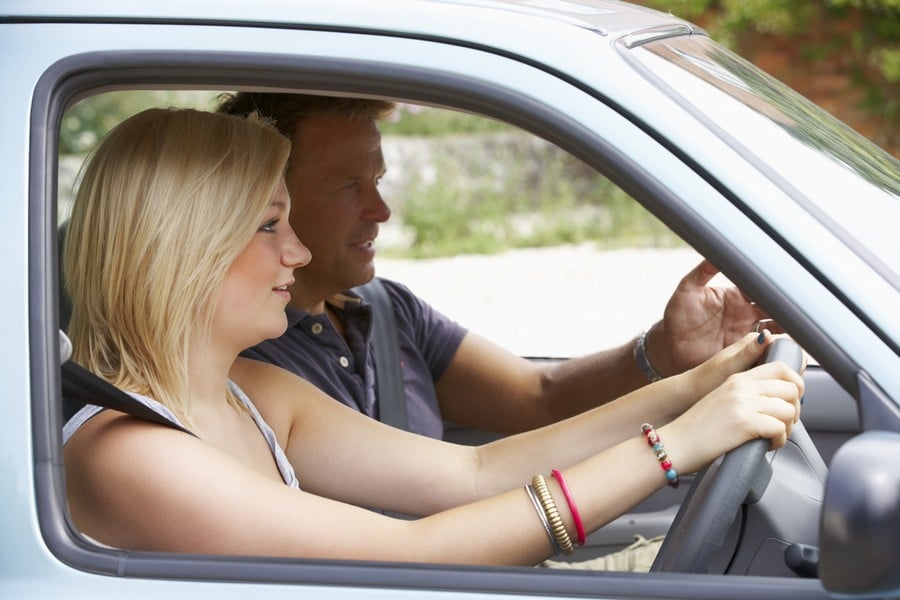
Understanding the Requirements of the Practical Driving Test
The practical driving test in the UK is an important step towards obtaining a driver’s licence. It consists of several components, including an eyesight cheque, vehicle safety questions (show me/tell me), a general driving ability assessment, manoeuvres such as parallel parking, bay parking and an independent driving section where you follow directions from a sat nav or road signs.
During the eyesight check, you will be required to read a number plate from 20 meters or 20.5 meters for the old style number plate.. The vehicle safety questions will test your knowledge of basic car maintenance and safety procedures. The general driving ability assessment will evaluate your overall driving skills, including your ability to control the vehicle, follow traffic laws and signs, and respond appropriately to hazards.
Manoeuvres are designed to test your ability to control the vehicle in tight spaces and require you to demonstrate skills such as parallel parking, bay parking r pulling up on the right and reversing. The independent driving section is designed to test your ability to navigate using a sat nav or road signs without assistance for 20 minutes.
The scoring system for the practical driving test is based on the number of faults committed during the test. You can pass with up to 15 driver faults but any serious faults or dangerous faults will result in an automatic fail.
Smart Drive UK’s service offers comprehensive training covering all aspects of the practical test, including manoeuvres, hazard perception, and road safety awareness. Our experienced instructors provide personalised training tailored to your individual needs and skill level. With their help, you can feel confident and prepared when it comes time to take your driving test.
Developing Safe Driving Habits and Skills
Passing your practical driving test in the UK is just the beginning of your journey as a safe and responsible driver. It is essential to develop safe driving habits and skills beyond just passing the test. Defensive driving techniques can help you avoid accidents on the road by anticipating potential hazards and being aware of other drivers’ actions. You should also ensure that you use mirrors, signals, positioning, speed control, and good observation while following traffic rules.
Defensive driving techniques include maintaining a safe distance from other vehicles, being alert for potential hazards, and avoiding distractions while driving.
Using mirrors, signals, and speed control effectively can help you communicate with other drivers on the road and avoid accidents. You should also be aware of your surroundings at all times and adjust your driving accordingly.
Practise Makes Perfect Preparing for Your Practical Test
Preparing effectively for your practical driving test requires more than just learning the rules and manoeuvres. practising different types of roads, such as motorways, rural areas, town driving can help you become more comfortable with different driving conditions. Familiarising yourself with common routes taken during tests can also help you feel more prepared on test day.
Taking mock tests with an instructor can help you identify areas where you need improvement and get used to the format of the test. Improving specific skills like clutch control or parallel parking can also help you feel more confident behind the wheel.
Building Confidence Behind The Wheel
Building confidence behind the wheel is crucial for any new driver. It can be challenging to feel confident while driving, but there are several ways to improve your skills and build your confidence. One way is to maintain calmness under pressure by staying focused on the road ahead and avoiding distractions.
Another way to build confidence is to focus on positive experiences rather than mistakes made. Celebrating small victories, such as successful manoeuvres or navigating a difficult junction, can help boost your confidence and make you feel more comfortable behind the wheel.
Building up experience over time by consistently practising driving skills is also essential.
Improving specific skills like clutch control or parallel parking can also help you feel more confident behind the wheel. Taking lessons with our experienced instructors who can provide personalised training tailored to your individual needs and skill level can be beneficial.
Understanding the Importance of Hazard Perception
Hazard perception is the ability to identify potential hazards on the road before they become dangerous and react quickly and appropriately to avoid accidents. It is a crucial skill for any driver, as it can help prevent accidents and save lives. Hazard perception is especially important for new drivers who may not have as much experience on the road.
To improve your hazard perception skills, there are several tips you can follow. One tip is to stay alert and focused while driving, paying attention to your surroundings at all times. You should also practise scanning the road ahead, looking for potential hazards like pedestrians, cyclists, or other vehicles.
Another tip is to practise commentary driving, spotting hazards and saying them out loud can help you stay focused on this goal. As mentioned before practising defensive driving techniques, such as maintaining a safe distance from other vehicles and anticipating potential hazards. You can also take advanced driving courses to improve your skills and knowledge of road safety.
Mastering hazard perception is essential for any driver. by identifying potential hazards on the road before they become dangerous and reacting quickly and appropriately, you can prevent accidents and keep yourself and others safe. with practise and experience, anyone can develop strong hazard perception skills that will serve them well throughout their life as a driver.
Mastering manoeuvres such as Parallel Parking.
Start by using the following and build up your confidence
1. Find a space that is at two car lengths of your car.
2. Position your car parallel to the parked cars and leave about 1 metre of space between them.
3. Put your car in reverse gear and begin reversing slowly while turning the steering wheel towards the kerb.
4. When the back of your car is halfway into the space, turn the steering wheel in the opposite direction.
5. Continue reversing until your car is parallel with the kerb and straighten you steering wheel.
6. Make sure you are no more than a drains width from the kerb otherwise adjust your position
Throughout the exercise makes sure you are consitenty looking around the car for other road users and pedestrians. If any approach, stop and assess the situation. Ensure it is safe before continuing.
Common mistakes made during these manoeuvres include getting too close to other cars, hitting kerbs, not checking mirrors or blind spots, not maintaining good control or safe speed and not turning the steering wheel enough. To avoid these mistakes, practise these manoeuvres in a safe location with an experienced driver who can give you feedback.
To improve your skills, watch instructional videos or diagrams that demonstrate how to perform these manoeuvres correctly. You can also practise regularly in different locations and conditions to build up experience and confidence behind the wheel.
Preparing For The Independent Driving Section
The independent driving section in the practical test requires the driver to follow directions from a sat nav or road signs for approximately 20 minutes. This section is designed to test the driver’s ability to navigate and make decisions independently, without been given direction by your accompanying driver.
To prepare for the independent driving section, it is important to practise following directions from a sat nav or road signs. Familiarise yourself with the different types of road signs and their meanings. Practise using a sat nav in different conditions and locations, such as dual carriageways, town driving or in rural areas.
Tips for following directions from a sat nav or road signs include:
1. Plan your route ahead of time and familiarise yourself with the area.
2. Keep your eyes on the road and avoid distractions while following directions.
3. Listen carefully to instructions from the sat nav and look ahead for road signs.
4. If you miss a turn or make a wrong turn, remain calm and follow the instructions from the sat nav to get back on track.
5. Use common sense when following directions – if a route seems unsafe or impractical, use your judgement and find an alternative route.
6. If you are unsure which direction to take ask your instructor or examiner in good time where to go. This isn’t a fault. If it is not safe to change direction then proceed in the direction you are in position for.
To improve your skills, practise driving in different conditions and locations, such as busy city streets or quiet rural roads. You can also take mock tests with an instructor who can provide feedback on your performance.
Preparing for the independent driving section of the practical test requires practise and familiarity with navigating using a sat nav or road signs. by following these tips and practising regularly, you can improve your skills and increase your chances of passing the test.
Staying Calm During Your Practical Test
Staying calm during your practical test is essential for performing at your best. Here are some strategies for staying calm:
1. Breathing exercises: Deep breathing exercises can help reduce anxiety and promote relaxation. Take deep breaths in through your nose and out through your mouth, focusing on the sensation of the air moving in and out of your body.
2. Focus on positive experiences: Instead of dwelling on mistakes or negative thoughts, focus on positive experiences you’ve had while driving. This can help boost your confidence and remind you of your abilities.
3. Maintain confidence in your abilities: Remember that you have prepared for this moment and have the skills to pass the test. Trust in yourself and your abilities.
4. Follow directions carefully: Whether following directions from a sat nav or road signs, be sure to read them carefully and follow them precisely. This can help reduce stress and avoid mistakes. Ask if unsure.
5. Practise visualisation techniques: visualise yourself successfully completing the test, from starting the car to finishing the last manoeuvre. This can help build confidence and reduce anxiety.
Staying calm during your practical test is key to performing at your best. by using these strategies, you can reduce anxiety, maintain confidence in your abilities, and stay focused on the task at hand. remember to take deep breaths, focus on positive experiences, follow directions carefully, and practise visualisation techniques to prepare yourself for success on test day.
Frequently Asked Questions About Preparing For Your Practical Test
1. How long does it take to pass my practical test?
The amount of time it takes to pass your test varies depending on individual factors such as your driving experience and skill level. On average, it takes around 45 hours of driving lessons with a qualified instructor before a learner driver is ready to take their test.
2. What happens if I fail my first attempt at the practical test?
If you fail your first attempt at the practical test, you can retake it after 10 working days. (this may change). It is important to use this time to practise and improve your skills before taking the test again.
3. What should I bring with me on the day of my practical test?
You should bring your provisional driving licence, theory test certifciat, confirmation email for test booked and a suitable car for the test with L Plates. An additional internal rear view mirror for the examiner. The car must be insured, taxed, and have a valid MOT certificate if required. Y
Preparing for the practical test requires practise, patience, and attention to detail. It is important to work with a qualified instructor and practise regularly in different conditions and locations to build up experience and confidence behind the wheel. Remember to bring all necessary documentation on the day of your test and remain calm and focused throughout the exam.



